Skip to:
- Welcome
- Who we are
- Where the money goes
- Getting started with your fundraising
- Counting down to your event
- Fundraising ideas
- Top tips for fundraising
- Some final things to remember…
- Resources

Welcome
Welcome to your fundraising journey!
Thank you for fundraising for YWCA Australia, we’re honoured to have you on board! Whether you’re hosting an event or fundraising online, your support will positively impact the lives of women, young women and girls across Australia.
We hope this toolkit provides inspiration and ideas to support you in your fundraising journey, complete with all the details you need to raise funds for YWCA Australia and important information on fundraising in your region.
Need help at any point?
If you’re having trouble with the logistics of your fundraising journey or need tips in promoting your event, get in touch with our Fundraising and Events team: giving@ywca.org.au. We are more than happy to help!

Who we are
YWCA Australia is an intersectional feminist organisation focused on improving gender equality for women, young women and girls. For 140 years, we have challenged the systems, structures and policies that act as barriers to women, especially young women, achieving their full potential. Find out more about our vision, purpose and values.
We provide community programs and services to improve the lives of women, young women and girls all over Australia, aligned to our key strategic pillars of safety and wellbeing, housing and homelessness, and leadership.
We’re proud of the work we do, and are committed to delivering high impact, evidence-based programs and services across Australia’s diverse social and geographic landscape.

Where the money goes
Every Dollar Helps Create a Future – a future where all women, young women and girls are equal, safe and respected.
By supporting us, you help to continue our community programs including:
- Domestic and family violence services to protect women and their families.
- Homelessness services and affordable housing for young people, women and their families.
- Mentoring and leadership programs for young women and girls.
What your fundraising supports
$500
can pay rent arrears to stabilise a tenancy where a woman is facing eviction
$1,000
can provide five women with support for their immediate needs after experiencing a traumatic life event
$5,000
can establish sustainable tenancies for five women
$10,000
can pay rent arrears to stabilise a tenancy where a woman is facing eviction
$50,000
can support the delivery of a nation-wide advocacy and awareness campaign about the impact of domestic and family violence on women, young women and girls
$100,000
can fully fund a homelessness support program for older women for one year

Getting started with your fundraising
Set your fundraising goal
Your contribution means a lot so don’t limit yourself! Decide whether your goal will be achievable for your event or campaign and set your fundraising target. For ideas, have a look at the dollar handles above, under ‘what your fundraising supports’.
Choose a fundraising idea
Take a look at our suggestions for FUNdraising ideas or brainstorm some exciting ideas of your own! Make sure you choose an activity that will resonate with your family, friends and networks in order to hit your target.
Create your online fundraising page
The best way to set up your online fundraising page is by setting up your personal page on our website. This is a legal requirement in most Australian states and territories, and allows YWCA to issue you an Authority to Fundraise.
Planning the details
- Decide what your event will be: Are you creating a personal challenge for yourself like quitting caffeine, donating your birthday presents, or running a marathon? Or are you holding an event for your local community such as a market stall, trivia night, or charity dinner?
- Set a date and time: Ensure that the day you choose is appropriate for your guests and will not interfere with other events or public holidays.
- Location: Find a place to have your challenge or event. It could be in your own backyard, a hired venue or event, or even a virtual event.
- Make a budget: Write up your expenses in the YWCA Event Budget Template and list what you might be spending on the event (venue hire, marketing, catering) and compare it with how much your target is. The best practice for this is that the expenses must not exceed more than 40 per cent of the total income.
Note: YWCA Australia cannot pay for any expenses from the event.
Note: As a requirement of hosting an event on behalf of YWCA Australia, it is required that you complete the YWCA Event Budget Template and submit this at the conclusion of your event.
- Spread the word: Now you know what your activity will be, it’s time to let everyone know! Post about it on all your social media accounts and reach out to friends, family, neighbours, colleagues, or even your local barista. Speak to anyone that would be interested in or can help get the word out about your fundraising event.
You can create great looking posters and ads using free online graphic design tools like Canva. Just note, if you use the YWCA name or brand in your advertising, we need to approve your poster before you start using it!

Counting down to your event
Congratulations! It’s finally time to host your fundraiser and show everyone why you are
supporting YWCA Australia. Here’s some helpful tips to remember along the way:
Four to six weeks out
- Advertise your fundraiser using social media tiles, a Facebook event page, posters, newsletters and any other avenues that may be available to you.
- Purchase merchandise to sell at your event from the YWCA Australia store.
- Coordinate any volunteers, suppliers, venues, and other logistics.
Two weeks out
- You should now have most of the details organised. It’s time to focus on collating your RSVPs, fine-tuning the timeline and ensuring any volunteers have all the information they might need.
- Download and print any materials you may need from the YWCA Australia website including resources like flyers, pledge forms, donation tally sheet and videos.
One week out
- Pack everything you may need.
- Organise a float in case people need change for their donation or purchase.
During the event
- Breathe! All your preparation will pay off.
- Have a laptop or tablet available for people to make cashless donations straight to your fundraising page.
- Spend time with your guests and donors and thank them for being a part of the fundraiser.
- If you’re hosting an event, remember to include either a Welcome to Country or an Acknowledgement of Country.
- Take plenty of photos! Make sure if you are taking photos of children, ensure you have consent from their legal guardian.
- Remember to put the FUN in FUNdraising!
Within a week after your event
- Share your photos online, and don’t forget to tag us!
- Bank the money and thank your supporters. No matter how big or small their contribution was, thank everyone who supported you in your fundraising journey! Add any cash donations to your page by entering these as individual donations to your fundraising page. Tax receipts will be sent to donors at the same time.
- Send your completed budget template to giving@ywca.org.au clearly stating:
- the full name of the person that registered the fundraiser
- the email of the person that registered the event
- your event ID
- the date/s of your fundraiser.
Fundraising ideas
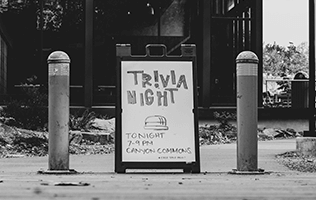
Quiz Night
Quiz nights are popular for a few simple reasons – they’re easy to organise, affordable to host and can be customised to appeal to any audience! Invite friends to your home or ask a local restaurant and bar to host you and encourage donations at the door. You can incorporate feminist-inspired quiz names and questions!

Bake Sale
Who doesn’t love cake? Get baking and treat your friends, family and colleagues to some biscuits, buns or brownies for a great cause!

Dinner Party
A cocktail event, a wine and cheese evening or a three-course meal, a themed evening or your Sunday best – you decide! Sell tickets and invite guests for an evening of food, chatting and raising money. Prepare a short dinner speech so that guests will understand how meaningful this evening and their contributions truly are.
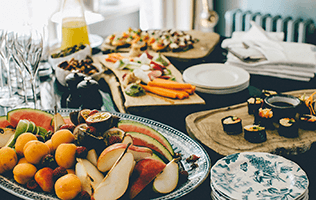
Morning or Afternoon Tea
Host a morning or an afternoon tea. Then sit back, relax, drink tea, eat cake and support YWCA Australia with donations on entry. Combine your event with a bake-off and a raffle for some next level fundraising!
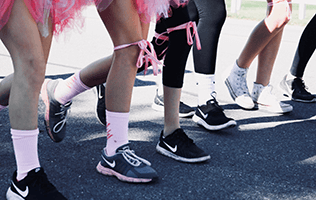
Walk, Jog, Run, Cycle, Swim!
Taking part in a physical exercise challenge is a year-round favourite that can raise lots of money. Sign up to an event in your local area or set out on your own adventure. Whether you go one
kilometre or a hundred, push yourself with a challenge that’s right for you!
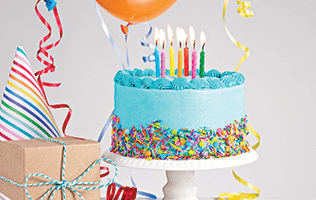
Birthdays
Start up a fundraising birthday page and encourage donations instead of presents!
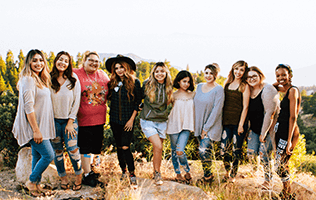
Casual Dress Day
Host a casual day at work or have a no-uniform day at school! Collect a gold coin donation from your colleagues or classmates who join in. A great idea is to have a colour theme.

Challenge Yourself
Go skydiving, shave your head, face your worst fear or host a dance marathon and boogie for 24 hours! Challenges are a great way to get your friends and family to dig deep.
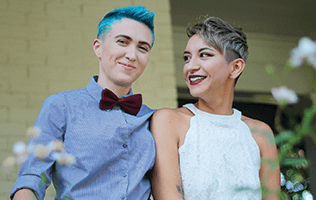
Anniversaries
Start up a fundraising anniversary page and encourage donations instead of presents!

Community Event
A community event is a great way to get everyone involved in supporting your cause. Think local marketplaces, a cook off, a march, or even a battle of the bands – the sky’s the limit!
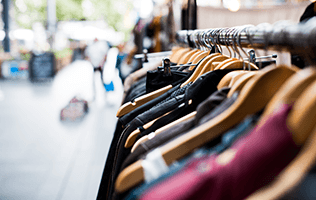
Garage Sale or Clothes Swap
Have a lot of unused furniture or clothing? Host a garage sale or clothes swap in your area to boost your fundraising. You can promote it online or have a sign at the end of your street!
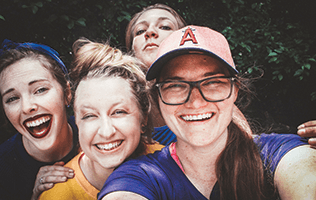
Other Celebrations
Start up a fundraising page and encourage donations instead of presents!

Top tips for fundraising
Make the first step
Show everyone your support and commitment to your fundraiser by being the first to donate. Giving as much as $50 can encourage others to donate highly also.
Pimp your fundraising page like a PRO
Make sure everyone who visits your fundraising page is inspired to donate. Tell them what you’re up to, what you want to achieve – and WHY!
Follow these simple steps:
- Upload a great picture of you or your team
- Show your target
- Share your passion – why are you doing this?
Let people know how much to donate
You can inspire people to donate a certain amount by showing what their money can do. Use our graphic on page two so you visually show the difference people can make.
Share share share
You’re fundraising, which is awesome, but now you need to shout it from the rooftops! Don’t underestimate the power of an email or simply adding our fundraising email banner to the bottom of your emails.
Get creative on social media and make sure everyone knows what you’re up to. Share your fundraising plans and events, share your target and thank people publicly to motivate others to help you on your way to smashing your target!
Don’t forget non-digital asks as well! If you’re holding a public local event, make posters and stick them up around your neighbourhood! Write to local businesses and ask for sponsors for your trivia night, or for donations for raffle prizes.
Finally – ask again!
A friendly reminder can go a long way when trying to reach your fundraising target so don’t be afraid to ask people if they would like to contribute. This can be in the form of reaching out to individuals again or refreshing your fundraising page.

Some final things to remember…
Deposit your donations
Donations over $2 are tax-deductible, and receipts will be issued to individual donors when they make their donation directly to your fundraising page.
For cash donations collected offline, you will be able to log in to your fundraising page and add these as offline funds on behalf of the donors. Donations eligible for tax-deductible receipts will then be issued automatically. Tax-deductible receipts are not eligible for the total fundraising amount unless the fundraiser can show that they were the donor for 100 per cent of the donated funds.
Thank your supporters!
Gratitude is the most powerful way to acknowledge your supporters during and after your event. No matter how big or small their contribution was, thank everyone who supported you in your fundraising journey!
Financial & legal logistics when fundraising
Fundraising legislation in Australia is state-based, and it’s important to ensure that if you are fundraising or accepting donations, you adhere to the legislation for each state your event or fundraiser will be in. This can include licences, permits, receipting and permissions. There are no exceptions to these regulations.
- NSW – https://www.acnc.gov.au/fundraising-new-south-wales
- VIC – https://www.acnc.gov.au/fundraising-victoria
- QLD – https://www.acnc.gov.au/fundraising-queensland
- ACT – https://www.acnc.gov.au/fundraising-australian-capital-territory
- SA – https://www.acnc.gov.au/fundraising-south-australia
- NT – https://www.acnc.gov.au/fundraising-northern-territory
- WA – https://www.acnc.gov.au/fundraising-western-australia
- TAS – https://www.acnc.gov.au/fundraising-tasmania

Resources
Letter of Approach
You can use this template letter to approach companies to support your fundraising event or campaign.
Welcome to Country
Whenever an event is being organised, it is YWCA best practice that a Welcome to
Country be performed by a local Aunty, or an alternative traditional landowner. It is important to recognise this service and pay accordingly. As a guide, $500 is a standard fee however when you begin planning, it’s important to have this cost confirmed with your local Land Council.
We live by the principles of gender equality and equal pay for equal work. Paying people for their time, especially women, is imperative. If your event is very small, or has no income attached, it is not always possible to cover the costs of a Welcome to Country speaker. Where possible, seek sponsorship. If this is not an option, then it is important
to ensure an appropriate acknowledgement of country is performed.
Acknowledgement of Country
Simple version
I’d like to acknowledge the Traditional Owners of the land on which we meet today, the [NAME] people of the [NAME] nation. I would also like to pay my respects to Elders past, present and emerging.
Extended intersectional version
I’d like to acknowledge and pay respect to the [NAME] people of the [NAME], on whose land we gather on tonight. I recognise that as immigrants to this country, we benefit from the colonisation of the land now called Australia and have a shared responsibility to acknowledge the harm done to its first peoples and work towards respect and recognition.
I recognise that Aboriginal and Torres Strait Islander women are leaders in working to prevent the disproportionate levels of violence enacted against them, their children and their families. I also acknowledge and celebrate that intersectional theory has largely emerged from black and indigenous feminist activism and expertise in the United States and around the world, including Australia.
I would like to acknowledge their continuing connection to land, sea and community. To pay our respects to the Aboriginal and Torres Strait Islander ancestors, elders, to those here tonight and the generations to come.
As it always was, and always be, Aboriginal land.
Accessibility
We are proud to be an intersectional feminist organisation, celebrating and supporting women and non-binary people in all their diversity. Events held on behalf of YWCA Australia should reflect this, ensuring that as a community, we are truly inclusive
and accessible.
The information below is an overview of considerations from the Australian Network on Disability that should be made to support event attendance by people with disability (PWD) and is a good place to start when planning your event. Always remember to ask each attendee about their specific requirements; never assume.
It is best practice to allocate a specific percentage of budget to accessibility rather than a standard amount. Smaller events with limited funding may not be able to meet every requirement, though every effort should be made. For larger scale events, all considerations should be taken. For people in the disability community, true accessibility means not having to ask if an event is accessible because all the information is available.
Planning
- If you have a planning group / co-design committee, is there a PWD who can contribute?
Venue
- When meeting with venues, ask about entrances, lifts, ramps and corridor widths meeting Australian Standards. These are available online.
- Ensure automatic doors at entrance are available and functioning. If there are no automatic doors, make sure doors will be attended or propped open during the course of the event.
- Ensure accessible bathrooms are available and as close as or closer than the general bathrooms.
- Check that the bathrooms are functioning, clear of clutter, and can be easily accessed – this means that they are not being used for furniture or supply storage. Adequate room for a wheelchair to turn and lock the door is essential to the bathroom being accessible. If the bathroom is also being used as a parent’s room, can the change table and other amenities stay folded away between uses, as to not obstruct the area? Is the flush, lock, sink and soap within reach of a wheelchair user? Is the door extremely heavy or difficult to open?
- Make sure your venue understands the laws surrounding service animals in Australia and staff are briefed at the time of event.
- Where possible and relevant, check that the acoustics of the venue are adequate, and that noise from external sources do not interfere. Venues with a hearing loop already installed are preferred.
- When considering the capacity for your event is the venue large enough to allow people with mobility aids or assistance animals to freely move around when all attendees are present?
Wayfinding
- Ensure your event venue is accessible. Is there level access? Is there Braille signage? Are there sufficient Tactile Ground Surface Indicators?
- Wayfinding materials should be simple and easy to read.
- The event organiser should provide a verbal explanation of the layout of the venue at the start of the event. This should include the layout of the room and directions to toilets, meal areas, breakout rooms and fire exits.
Room arrangement
- Book Auslan interpreters wherever possible, and reserve seats in front to enable a clear view for people who are deaf and hard of hearing.
- Provide sufficient space between tables for wheelchair access.
- Ensure for people with service dogs and animals that there are safe spaces where the animals can sit. Not in walkways or where they can be stepped or tripped on.
- Ensure table height is accessible to wheelchair users and people of short stature. This includes refreshment tables and buffets.
- For standing events, provide some chairs for people who may experience fatigue.
- Venue should be clear of obstacles, and trip hazards such as cables should be removed or taped down.
- Provide guests with access to a separate, quiet area to allow them to take a break, if needed.
Invitations
- Clearly outline the accessibility features of the venue you have chosen, including when interpreters, stenographers, etc will be provided. You can use appropriate standard symbols on the event poster and digital assets to advise that accommodations will be provided.
- Ask attendees if they would like to advise of any accessibility requirements when registering so that these adjustments are managed as a part of the event.
- Ensure digital invitations are accessible. This means using appropriate alt text in digital spaces.
- Ensure guests and participants can register for the event in a range of ways, including by phone, email or online. If using an online form or third-party booking service, make sure it is accessible when using screen-reading software.
- Provide information about accessing the venue, including accessible parking, general parking, public transport, and venue drop-off points (be sure to check for curb cuts at the accessible drop off spot so wheelchair users can safely access the sidewalk).
- For ticketed events, Companion cards and similar services should be honoured. This means complimentary (or at cost) tickets for those attending with ticketed PWD
Marketing and Communications
- Advertise to the communities you are providing accessibility for – for example if you have organised an Auslan interpreter, advertising to the Deaf or hard of hearing community.
- Written material should be available in alternative formats, as required, and offered before and after the event (e.g. Braille, large print, audio, electronic).
- Signage, presentations and written material should have sufficient contrast levels to ensure accessibility for people with vision impairment. There are multiple tools online that will text contrast levels for you if you are unsure.
- Make written material available in plain English/Easy English alternatives. As a rule, use inclusive, person-first language.
Audio-visual
- Avoid strobe lighting or flashing lights.
- Provide a wheelchair ramp to the stage (if required) and ensure it complies with Australian Standards – it is even better practice to choose a venue that has a permanently accessible stage.
- Provide adjustable height microphones, or lapel microphones if required.
- Where possible, ensure a hearing loop is available and working.
- Provide space for Auslan interpreters (if required). Ensure interpreters are positioned in a well-lit area and clearly visible to the audience.
- Where possible, provide live captioning.
- Venue should be evenly lit throughout.
Presentations
- All videos must be captioned.
- Videos should be audio described where appropriate. If they cannot be audio described, the presenter should supply any visual information that a person with low vision may not be able to access. Presenters should describe any visual information in their presentations.




